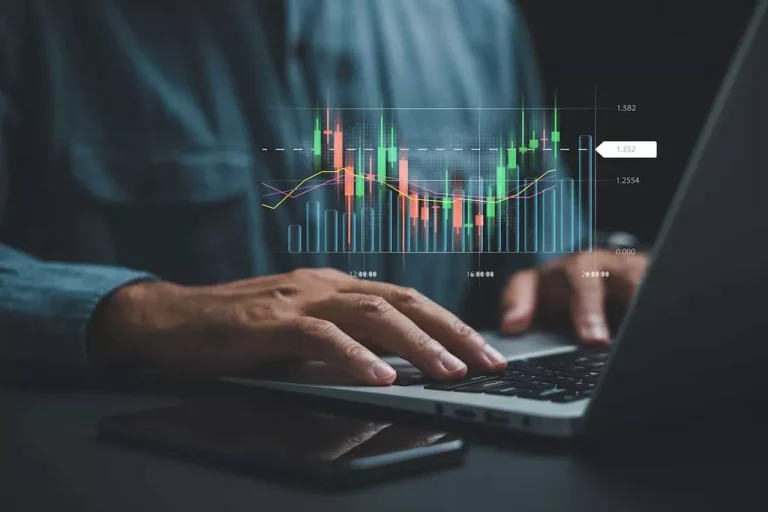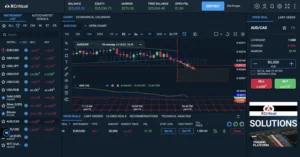Even before widespread computerization, technical market indicators were in use. Traders employ them to obtain more info about how the asset’s cost fluctuates. These technologies facilitate identifying patterns and acquiring buy/sell signals under certain market situations. Swing trading and medium-term trading both make use of several Forex indicators. They could also be helpful in some cases for long-term investments.
You must be extremely careful when selecting these trading tools because not all are appropriate for tech analysis. It’s essential to keep in mind that there are no perfect indicators. Some of them are detrimental to the transaction in addition to being worthless. Thus, let us discuss the most relevant ones in the article.
Trading Indicators Explained
An indicator is software that applies certain mathematical formulas and algorithms to estimate price behavior. It interprets the results in a particular way and then displays a simplified report — typically in the form of a graph — based on the data. Automated trading systems often rely on trading indicators to decide about purchasing or selling tokens within the market. The indicator can provide data in complete graphs, lines, dots, or other features. Based on this knowledge, the experts autonomously determine what to do and place trading orders.
Diverse marketplaces and exchanges employ comparable techniques designed to streamline technical analysis. Their primary use is overlaying or combining these charts with price/volume charts of traded assets. Each of these algorithms bases its computations on a specific formula. The differences vary grounded on the kind of indication and its purpose.


Turnkey Brokerage Solution For Your Business
Get the most profitable fully licensed fx/crypto brokerage software or ready-to-operate business in 48 hours. Best-in-class web & mobile trading platforms, sales-driven CRM, full integration with MT4/5, and 150+ payment providers.
Best Trading Indicators
Your knowledge and risk appetite can help find out which trading indicators work best. Let’s take a look at the leading indicators used by millions of experts around the world.
Moving average (MA)
A technical moving average indicator is the MA indicator. It displays an average price over a specified time frame. When a moving average is computed, the price is averaged over a given period. It increases or decreases depending on how much the cost fluctuates. The indicators come in several varieties. It is smoothed, weighted, exponential, and primary or arithmetic.
By cutting down price volatility, the MA helps specify the present trend of a token. It’s a curving line on a chart defined by the cost variations. The line tracks an asset’s cost, but since it filters noise and oscillations, the curves are smoother than the price’s. One of the fundamental purposes is to ascertain the prevailing trend. However, this indicator sometimes lags. Therefore, it aims to validate the present trend rather than to spot trend reversals.

Exponential moving average (EMA)
Creating an EMA allowed for an indicator to consider subsequent prices. The computation involves the incorporation of a smoothing factor into the formula. The method’s added benefit is the EMA’s higher sensitivity than the simple MA. The characteristic makes the exponential curve more common in derivative indicator applications. As trend indicators, moving averages make bullish and bearish zones on the Forex trading screen. If the curve is above the MA, the market is generally considered bullish; if it is below, it is considered bearish. EMA may function as a support and resistance level. The degrees of support or resistance get more substantial with increasing time.
Stochastic Oscillator
An indicator referred to as a stochastic oscillator shows the current price’s position about the cost range for a specific period in the past. Here, a number beyond 80% indicates a sale signal, while a value below 20% indicates a buy signal.
It is easy to predict that the price will drop shortly as it gets closer to the absolute corridor’s top limit or resistance. The likelihood of a price increment diminishes when it approaches total resistance. Moreover, after 99.9% of the purchase price, the hikes are not feasible. Generally speaking, you can begin to consider a fall when you surpass the 80% threshold from bottom to top.
Bollinger bands
Two lines that limit cost dynamics from above and below are visually represented by these bands. They are the first lines of support and resistance, and they are often located at a distance from the price.
MA and Bollinger Bands are comparable. The Bollinger Bands’ boundaries are defined at intervals of a specific number of standard deviations. On the other hand, the MA’s limits are set at a particular distance, expressed as a percentage, above and below the MA curve. The bands widen during market volatility and contract during times of more stability because the regular deviation fluctuates with volatility.
Piranha
It is yet another well-liked indicator. In addition to offering indications for entering and leaving positions, its intent is to estimate the trend’s strength. The primary benefit is the ability to gauge a trend’s intensity. The trader will get alerts to enter and quit the market. Additionally, the indication performs admirably when mixed with other signs. XCritical recommends utilizing the signal to ascertain possible entry and exit points.
Fibonacci retracement
These levels help establish stop losses and trading aspirations. Their design is to provide the most precise launch into the market. Ascertaining the asset’s present trading phase with their assistance is a piece of cake. The MetaTrader 4 trading terminal has a dedicated level-building tool, but the Fibonacci indicator makes the process quicker and simpler.
They work well for opening trades when the trend shifts as well. If you extend the Fibonacci grid appropriately, the cost should halt at critical levels for corrections in case the trend changes. Fib lines can develop into solid resistance or support.
Standard deviation
The indicator illustrates the range of an instrument’s price spread, which describes its volatility. A typical way to express the indicator value is in terms of the asset’s price under analysis. When building a securities portfolio or performing mathematical statistics, common price deviation is a function that the indicator primarily applies. It’s applied to specify the overall risk of the portfolio as well as the risk of each investment.
The indication is rarely utilized in the pure form in the classical sense. Nevertheless, it might be applied in conjunction with other indicators or as a foundation for creating more sophisticated technical trading indicators, such as Bollinger Bands. Standard Deviation often has low values during sideways periods since volatility is typically mild during these times. Furthermore, they frequently copy their extremes in terms of pricing. Standard Deviation starts to increase as soon as a new trend breaks through its extreme levels. With a stop order positioned behind the most recent price extreme, the trade is executed when the indicator line crosses its side.

Is Technical Analysis Reliable?
Technical analysis is a thorough approach to foretelling equity market value. It provides a framework for trade prediction, even if it does not provide a perfect success rate or significant profits. Frequently perceived as either self-defeating or self-fulfilling, its influence originates from market players’ shared beliefs and behaviors.
Experts respond by selling stocks to offset losses when they observe a pattern suggesting a stock’s collapse, strengthening the expected trend. Though it appears to be predictive, the method is not genuinely predictive of prices and does not yield long-term gains. Furthermore, if enough people make investments based on the prognosis, the self-fulfilling tendency occasionally has negative impacts that alter the underlying pattern that generated the prediction.
How Many Technical Analysis Tools Are There?
Through several variables, such as cost fluctuations and volume variations, trading tools help determine a stock’s or security’s trend. These tools study past info and patterns to aid traders identify and assess possible opportunities. They also help determine how long stocks take to reach their peak and lowest costs over given periods. Let’s dwell on the best-in-class tools:
- Relative strength index, or RSI, tech analysis instrument, displays the proportion of positive to negative fluctuations in financial instruments. Because it’s easy to compute and does not have many significant shortcomings of other oscillators, including the effect of outdated data or interpretation complexity, investors prefer to utilize it.
- Analyzing trending markets is the primary goal of the instrument known as Parabolic SAR. When applied to a chart, the indicator generally resembles an MA. However, it travels far more quickly and can shift its position about the price.
- Average Directional Index (ADI). This type of trading indicators establishes if a trend is there in the particular trade instrument or not. The MT4 and MT5 trading platforms come pre-installed with the tool. Various Forex trading techniques employ it as a filter to set the trading ranges.
- Technical analysis pattern recognition is a feature of the Autochartist adviser. The trader saves time since the computer handles all of the tedious labor for him. When trading on the foreign currency market, this instrument produces early trade suggestions that are mainly accurate. Traders can utilize complex search functions because of integrated VisualQuality indicators.
As an essential element in their toolbox, indicators have developed into a significant resource for many traders. They are faster than humans in analyzing and organizing large volumes of info. But knowledge by itself is useless. What matters most are the judgments traders make based on this information. An indicator’s usefulness depends on how a trader applies it as an instrument.
The cutting-edge platform XCritical seeks to take advantage of the most recent developments in the Forex industry. The company’s specialists provide Fibonacci levels, as well as Dragon Tail and Piranha. The aim of the relatively new Dragon Tail and Piranha indicators in financial market tech analysis is to help traders find possible entry and exit positions. So, if you’d like to spruce up your trading, you may benefit from XCritical services.






